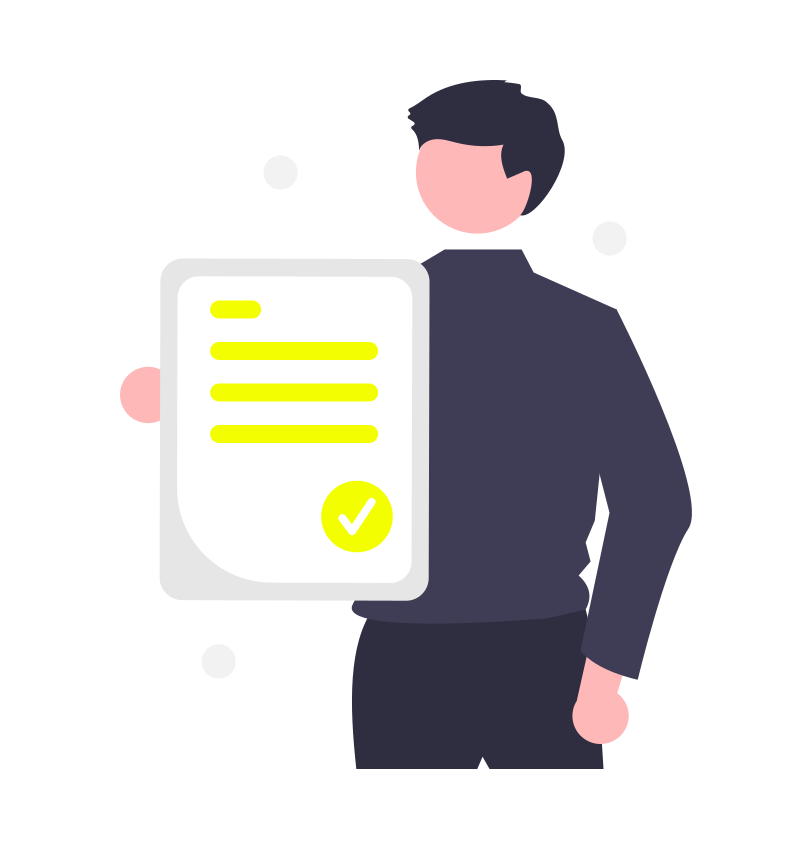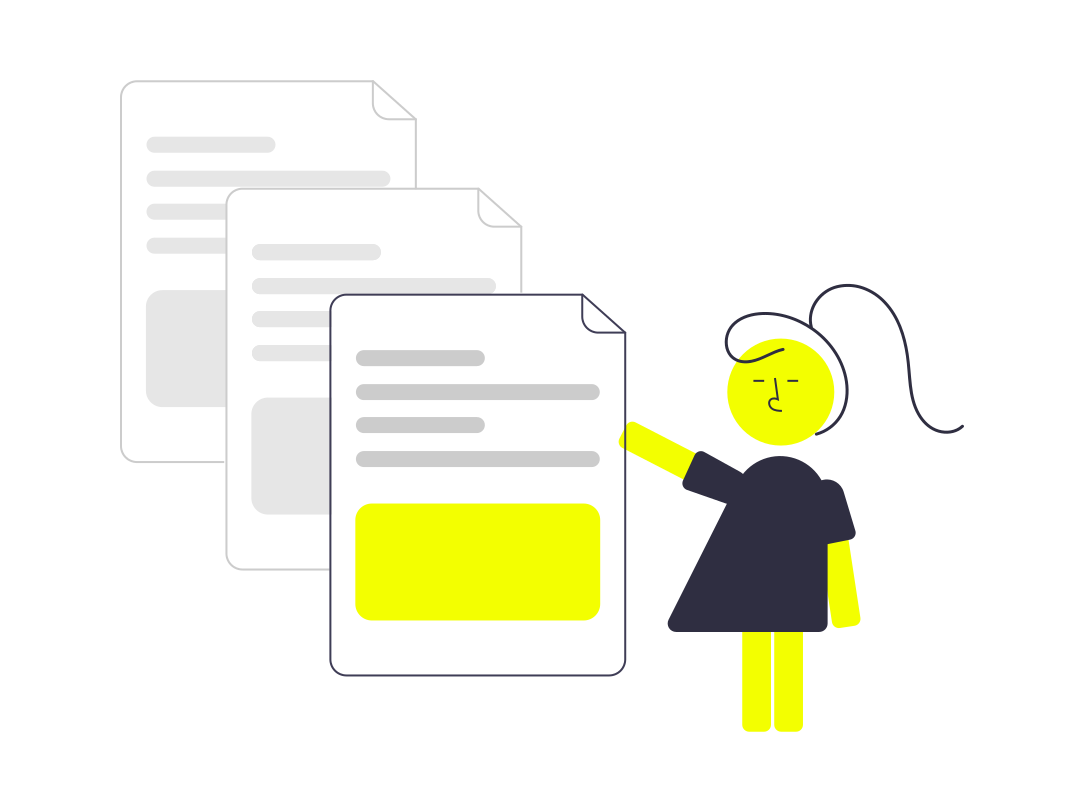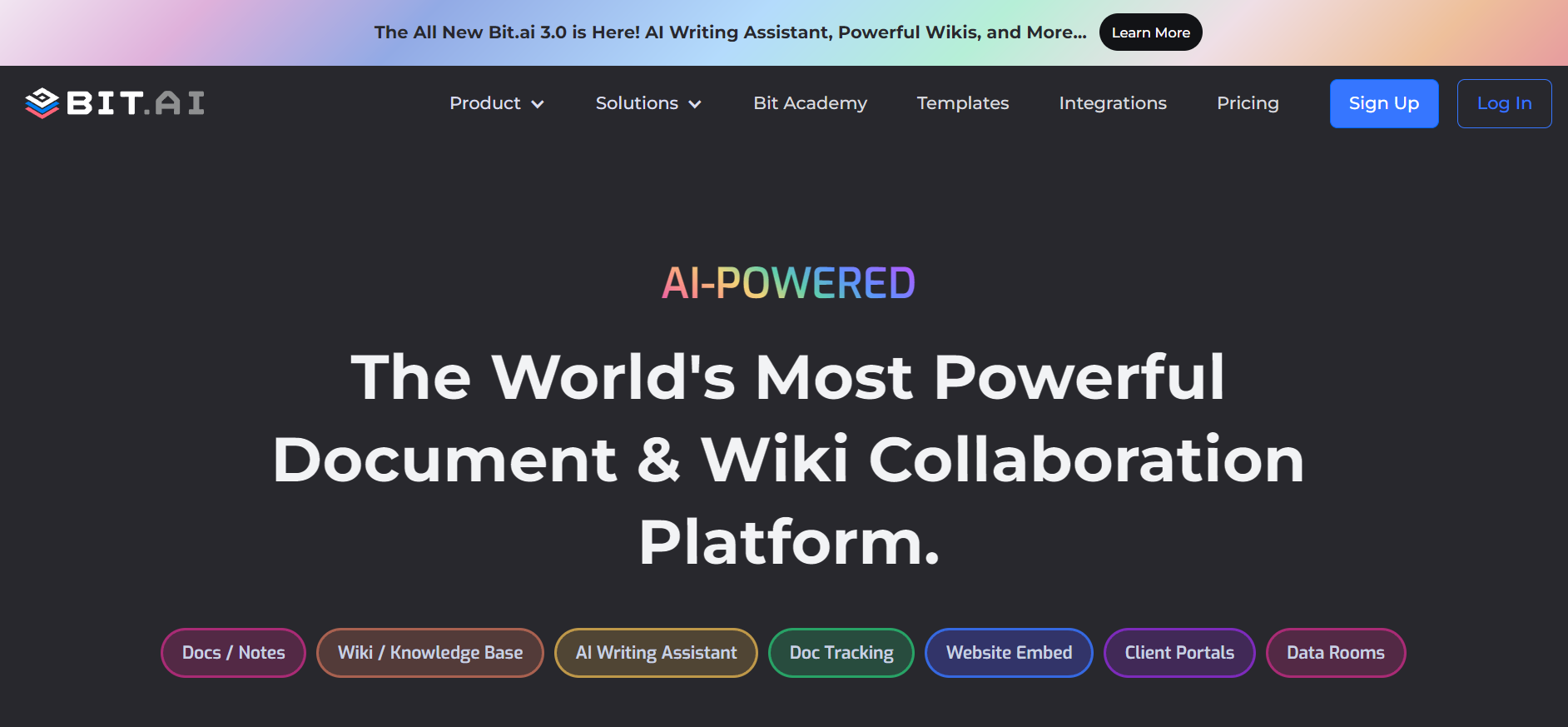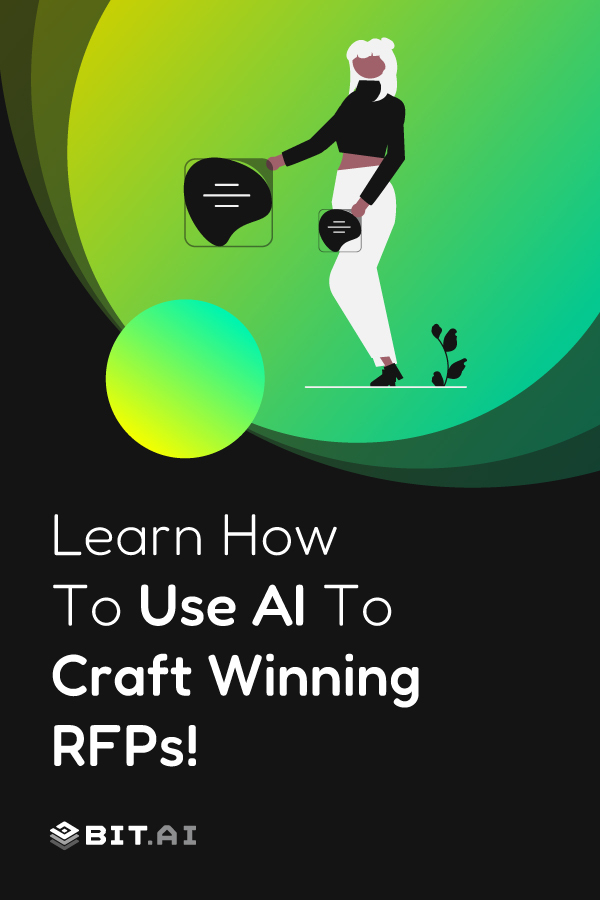Starting a big project with just a handshake agreement can be risky. For complex projects with many moving parts and stakeholders, it’s crucial to carefully choose the right contractor. This involves vetting contractors, seeking bids, and reviewing your options thoroughly before beginning the work. Even after all this effort, you might still worry about making the right choice.
This is where issuing a request for proposal, or RFP, becomes essential. An RFP is a formal document that communicates your organization’s need for services and invites vendors to submit their proposals to meet that need. Essentially, the RFP outlines what your project requires and asks potential vendors to provide their solutions.
Despite being a common practice in the business world, RFPs can still be confusing for many people. It is important to get it right. According to Hubspot, a clear difference exists in the time dedicated to RFP responses. Larger companies spend an average of 27 hours per RFP, while smaller businesses average 19 hours. Could this 8-hour gap be a factor in higher win rates for enterprises? You bet it is!
However, it is not always practical to spend so much time crafting a single RFP. The good thing is, you don’t have to. Let AI handle the heavy lifting. With the help of artificial intelligence (AI), crafting effective and winning RFPs can become much more manageable. In this guide, we will explore the best practices for using AI to streamline and enhance the RFP process, ensuring you get the best possible proposals for your project.
What is a Request for Proposal?
An RFP, which stands for Request for Proposal, is a formal document used to kick off a bidding process. It’s essentially an advertisement by an organization that needs a good or service, letting potential vendors know what they’re looking for.
Let’s break down the RFP process step by step to make it easy to understand.
- Identifying the Need: First, a company realizes it needs something, like new software, construction work, or professional services. They figure out exactly what they need and outline their requirements.
- Preparing the RFP Document: Next, the company creates the RFP document. This document includes:
- Introduction: Brief overview of the project or need.
- Scope of Work: Detailed description of what the company needs.
- Evaluation Criteria: How the proposals will be judged.
- Submission Guidelines: Instructions on how to submit proposals, including deadlines.
- Sending Out the RFP: The company sends the RFP to potential suppliers. These suppliers could be companies that the company has worked with before or new ones found through research.
- Receiving Proposals: Suppliers review the RFP and decide if they can meet the requirements. If they can, they prepare and submit their proposals, detailing how they would fulfill the company’s needs and at what cost.
- Evaluating Proposals: Once the proposals are received, the company reviews them based on the evaluation criteria. This might include looking at the cost, the quality of the proposal, the supplier’s experience, and other factors.
- Selecting a Supplier: After evaluating the proposals, the company chooses the supplier that best meets their needs. They may ask for additional information or negotiate terms before making a final decision.
- Awarding the Contract: Finally, the company awards the contract to the chosen supplier. Both parties sign the agreement, and the supplier starts working on the project or providing the service.
Read More: Mastering Request for Proposals (RFP): A Step-by-Step Guide
RFPs are commonly used by businesses and governments to procure a wide range of products and services. They help ensure a fair and transparent selection process, allowing organizations to compare multiple vendors before making a decision deciding.
Importance of a Well-Written Request for Proposal
A Request for Proposal (RFP) is a crucial document that helps organizations find the right vendors for their needs. Here’s why creating a well-written RFP is important:

- Clear Communication: A well-crafted RFP clearly communicates what your organization needs. By specifying requirements and expectations, you ensure that vendors understand exactly what you are looking for. This minimizes misunderstandings and helps vendors provide accurate and relevant proposals.
- Attracting the Right Vendors: When your RFP is detailed and precise, it attracts the right vendors. Vendors can assess if they have the expertise and resources to meet your needs. This means you get proposals from vendors who are genuinely capable of delivering what you require, saving you time and effort.
- Fair and Transparent Process: An RFP ensures a fair and transparent selection process. By outlining criteria for evaluation and decision-making, it helps prevent favoritism and corruption. This transparency builds trust among stakeholders and ensures that the best vendor is chosen based on merit.
- Competitive Pricing: Issuing an RFP invites multiple vendors to bid on your project, fostering competition. This competitive environment can lead to better pricing and value for your organization. Vendors are likely to offer their best terms and pricing to win your business.
- Comprehensive Evaluation: A detailed RFP allows for a thorough evaluation of proposals. You can compare vendors based on various factors such as price, experience, and approach. This comprehensive evaluation helps you make an informed decision that best meets your needs.
- Accountability: The RFP process holds both the organization and vendors accountable. For the organization, it ensures that all project requirements and expectations are clearly outlined. For vendors, it holds them to their proposals, ensuring they deliver what they promised.
- Better Project Planning: Creating an RFP forces your organization to think through the project details. This planning phase helps identify specific needs, potential challenges, and desired outcomes. As a result, you gain a better understanding of your project, which contributes to its success.
- Long-Term Benefits: A well-written RFP can have long-term benefits. By setting clear standards and expectations, it establishes a foundation for future projects. This consistency helps streamline future procurement processes, saving time and resources.
- Expert Advice and Solutions: An RFP allows you to tap into the expertise of vendors. Vendors often provide valuable insights and innovative solutions that you might not have considered. This external perspective can enhance your project and lead to better outcomes.
- Legal and Compliance Assurance: In some cases, issuing an RFP is necessary to meet legal or regulatory requirements. A well-drafted RFP ensures that your organization complies with these regulations, avoiding potential legal issues and penalties.
- Risk Management: The RFP process helps identify and mitigate risks. By detailing project requirements and vendor responsibilities, you can foresee potential problems and address them proactively. This reduces the likelihood of project delays and cost overruns.
Ultimately, a well-crafted RFP contributes to the overall success of your projects and helps you build lasting relationships with vendors.
What to Include in an RFP?
An RFP will vary based on the requirements and objectives of a project. but here’s a straightforward guide to the key elements you should include in an RFP, along with an example for each section.
1. Introduction
Purpose: Begin with a brief introduction explaining the purpose of the RFP. This will help potential vendors understand what your organization needs.
Example: “Our company is seeking proposals from qualified vendors to provide a new customer relationship management (CRM) system that will enhance our sales and support processes.”
2. Project Overview
Purpose: Provide an overview of the project, giving vendors a clear understanding of what you aim to achieve.
Example: “We are looking to implement a new CRM system to improve customer data management, streamline sales processes, and enhance customer service.”
3. Detailed Requirements
Purpose: List the specific requirements and features you need. Be as detailed as possible to avoid misunderstandings.
Example:
- The CRM should integrate with our existing email system.
- It must support mobile access.
- We need customizable reporting features.
- The system should handle up to 10,000 customer records.

4. Timeline & Milestones
Purpose: Outline the timeline for the project, including key milestones. This helps vendors understand your schedule and deliver within your timeframe.
Example:
- RFP Release Date: July 1, 2024
- Proposal Submission Deadline: July 31, 2024
- Vendor Selection: August 15, 2024
- Project Start Date: September 1, 2024
- Go-Live Date: December 1, 2024
5. Budget Information
Purpose: Provide a budget range if possible. This helps vendors propose solutions that fit within your financial limits.
Example: “Our budget for the CRM implementation is between $50,000 and $70,000.”
6. Evaluation Criteria
Purpose: Explain how you will evaluate the proposals. This ensures vendors know what is important to you.
Example:
- Cost: 30%
- Experience and qualifications: 25%
- Technical approach: 25%
- References and past performance: 20%
7. Terms & Conditions
Purpose: Include any legal or contractual terms that the vendor needs to agree to. This protects your organization and sets clear expectations.
Example: “All intellectual property developed during the project will be owned by our company. Payment terms are net 30 days from invoice date.”
8. Contact Information
Purpose: Provide the contact details for the person handling the RFP. This makes it easy for vendors to ask questions and submit their proposals.
Example: “Please direct all questions and submit proposals to:
ABC, Project Manager
Email: abc@company.com
Phone: (555) 123-4567″
9. File Attachments
Purpose: Attach any additional documents that might help vendors understand the project better.
Example: “Please find attached the current system architecture diagram and a sample data file.”
By including these elements in your RFP, you ensure that potential vendors have all the information they need to provide a comprehensive and accurate proposal. This not only saves time but also helps you get the best possible solutions for your project.

Read More: Proposal Writing: How to Write them Effectively!
AI Best Practises for Crafting a Request for Proposal
1. Automated Research and Data Collection
Ever felt overwhelmed by the research needed to write a strong RFP? You’re not alone. Drafting an RFP often involves gathering information on industry trends, competitor offerings, and specific vendor capabilities. This can be a time-consuming task.
- Automated Tools Selection: Start by selecting automated tools designed for research and data collection. These tools are specialized software programs that can swiftly gather and analyze information from various sources across the internet.
- Defining Search Parameters: Specify the parameters and criteria relevant to your RFP needs. This could include specific keywords, industry sectors, geographic locations, or any other pertinent details that align with your project requirements.
- Setting Up Automation: Configure the selected tools to automate the research process. This typically involves inputting the defined parameters into the tool’s interface so it knows exactly what kind of data to search for and collect.
- Data Collection Process: Once set up, the automated tools will scour the internet for relevant data. They can sift through websites, databases, academic papers, news articles, and other sources to gather the necessary information.
- Filtering and Sorting: After collecting the data, these tools can filter and sort it based on predefined criteria. This helps in organizing the information into categories such as market trends, competitor analysis, technological advancements, and so forth.
- Generating Reports: Automated tools can generate comprehensive reports based on the collected data. These reports can include summaries, statistical analyses, graphical representations, and other formats that make the information easier to understand and utilize.
AI is a powerful tool, but it doesn’t replace human expertise. Review the information the AI gathers and use your judgment to determine what’s most relevant to your RFP.
2. AI-powered Content Generation
AI-powered content generation involves using artificial intelligence technologies to create various types of content automatically. This could include articles, reports, marketing copy, and even creative writing. When crafting an RFP for AI-powered content generation, here are some best practices to consider:
- Define Your Needs Clearly: Start by describing what kind of content you need AI to generate. Specify if it’s articles, product descriptions, social media posts, or any other type. Detail the quantity, quality, and any specific requirements like SEO optimization or tone of voice.
- Training and Customization Needs: If you require the AI model to be fine-tuned or customized to better suit your specific industry or brand voice, include details on how vendors should approach this. Specify if you expect training data to be provided or if the vendor should handle this independently.
- Provide Sample Inputs and Outputs: Help vendors understand your expectations by providing examples of the input data (e.g., product specifications, data points) and what the AI-generated content should look like. This clarity ensures vendors can tailor their proposals accurately.
3. Use of AI-powered collaboration platforms
Crafting a Request for Proposal (RFP) isn’t a solitary task—it requires collaboration. After all, these documents often need refining through multiple revisions. Imagine trying to coordinate changes and updates with team members spread across different locations or time zones. It can quickly become a logistical headache, slowing down the process and making it harder to meet deadlines.
There’s a smart solution that doesn’t break the bank: AI-powered collaboration platforms. These innovative tools are designed to streamline teamwork by integrating artificial intelligence with user-friendly interfaces. Here’s how they work:
- Real-time Collaboration: Multiple team members can simultaneously work on the document, viewing edits and comments in real time. This eliminates the need for back-and-forth emails and ensures everyone is working with the latest version.
- Version Control: Such tools help manage versions automatically, tracking changes and allowing authorized personnel to review and approve modifications. This reduces the risk of errors and ensures compliance with organizational standards.
- AI-enhanced Editing: Some platforms offer AI tools that can suggest edits, correct grammar, and even improve readability based on predefined style guidelines. This enhances the quality and professionalism of the RFP without extensive manual editing.
- Integration Capabilities: These platforms often integrate with other productivity tools, such as project management software, calendar apps, and communication tools.

4. Customisation & Personalisation
In recent years, customer expectations have evolved dramatically. Offering a one-size-fits-all approach is no longer enough; consumers crave personalized interactions that cater to their unique needs and preferences. Studies show that a significant majority—70%—of customers feel frustrated when they don’t receive a personalized experience. This frustration can lead to reduced customer loyalty and potentially lost business revenue.
Here’s how AI can help you personalize your RFP for a better response:
- Highlight Relevant Expertise: Each vendor has unique strengths and weaknesses. AI can help you tailor your RFP to highlight the specific skills and experience that are most crucial for your project. This shows vendors you’ve done your research and value their expertise in those areas.
- Speak Their Language: AI can even help you analyze past proposals from successful vendors to understand the language and tone they respond best to. By incorporating this understanding into your RFP, you can create a document that feels more familiar and engaging for potential partners.
When customers feel understood and valued, they are more satisfied with their overall experience. This satisfaction translates into increased loyalty and advocacy, as happy customers are more likely to return and recommend the brand to others.
5. Automated Compliance Checking
Organizations face mounting challenges to ensure compliance with an array of rules and policies. These regulations are not only numerous but also constantly changing, making manual compliance checking both cumbersome and error-prone.
AI-powered compliance automation offers a proactive solution to these challenges. Automated compliance checking refers to using artificial intelligence (AI) tools and algorithms to verify whether a product, service, or process meets regulatory requirements, industry standards, or internal policies automatically.
According to a study, using AI can reduce mistakes, handle routine tasks automatically, and make operations up to 93% more effective and efficient. Regulators are always introducing new rules, making it tough for businesses to keep up. That’s why more and more companies are realizing that automating compliance isn’t just a good idea—it’s essential for staying competitive and avoiding risks.
How Compliance Automation Works
Compliance automation operates by:
- Automated Monitoring: Continuous monitoring of systems and processes to detect compliance gaps and vulnerabilities.
- Real-time Alerts: Immediate alerts for any deviations from regulatory standards, enabling prompt corrective actions.
- Streamlined Reporting: Generation of comprehensive reports that demonstrate adherence to regulations, facilitating easier audits and certifications.
The beauty of AI is that it gets smarter over time. As you feed it with more RFPs and corresponding compliance guidelines, it will become increasingly adept at recognizing patterns and nuances. This translates to more accurate and helpful automated checks in the future.
6. Sentiment Analysis for Tone Optimization
One important aspect of crafting a successful RFP is ensuring that the tone and sentiment conveyed in the document are clear and appropriate. This is where sentiment analysis comes into play. When you’re writing an RFP, it’s crucial to strike the right tone.

The tone of your RFP sets the stage for how potential vendors perceive your organization and the project at hand. A positive and respectful tone can attract more qualified and enthusiastic responses. Conversely, a negative or overly critical tone might discourage potential partners from submitting their best proposals, even if the content of your RFP is sound.
A well-written RFP should instill confidence in potential vendors about your project and your company. Sentiment analysis can help you identify areas where your RFP might sound unsure or hesitant, allowing you to project a more confident and decisive tone.
Why Choose Bit.ai for Managing RFPs?
In the previous section, we discussed how AI-powered collaboration tools can revolutionize your RFP creation process, saving you time and effort while boosting overall quality. But with a vast array of options available, choosing the right platform can feel overwhelming. This is where Bit.ai steps in—your one-stop shop for seamless, AI-powered RFP creation and collaboration.

Bit.ai is an AI-powered innovative tool designed to simplify knowledge management, collaboration, and document creation. It offers a comprehensive solution for teams and individuals to create, share, and organize dynamic documents and wikis with ease. Here are some of the features of Bit.ai:
- Workspace: Bit.ai serves as a central hub for all your RFP tasks. It acts like a digital office where you can store and manage all your RFP-related information in one place, making it incredibly convenient to access and organize everything you need.
- Real-Time Collaboration: With Bit.ai, you can collaborate on RFP documents in real time with your team. Multiple team members can work on the same document simultaneously, enabling seamless teamwork. You can also leave comments and tag others to ensure smooth communication throughout the process.
- Inline comments/ @mention – Bit.ai makes communication within documents straightforward with inline comments and @mentions. You can highlight the text you want to discuss, add a comment, and notify your collaborators with just a few clicks. You also get an email notifying whenever you’re tagged in the comments or pinged.
- Smart Editor: Bit.ai’s editor is smart and user-friendly. It helps you make your documents look great by formatting text, adding links, creating tables, and more.
- AI Genius Writer: Bit.ai’s AI assists you with writing, rephrasing, proofreading tasks for your RFPs, conducting research, and generating ideas. It functions like a knowledgeable assistant always ready to support your RFP preparation.
- Smart Widgets: Bit.ai offers handy widgets that let you add all sorts of digital content to your documents, like images, files, tables, and even code snippets.
- Create Smart Wiki: Bit.ai’s smart wiki feature turns any document into a wiki. You can organize your information into subpages and link them together for easy navigation.
- Integration with other apps: Bit.ai works seamlessly with over 100 other apps, letting you embed content like Google Sheets, social media posts, and more directly into your documents.
- Multiple Sharing Options: Through Bit.ai, you can share your RFP documents in diverse ways. You can share them live, embed them on websites, or create trackable links with customizable settings such as password protection and expiration dates, ensuring the secure and controlled distribution of your proposals.
Having the right tools can make a huge difference when you’re working on important projects or collaborating with your team. Experience the power of AI in crafting RFPs with Bit.ai—sign up with Bit.ai today!
Conclusion
So, you’ve seen how AI can be a game-changer for crafting winning RFPs. But remember, AI is a powerful tool, not a magic wand. The best results come from a smart combination of AI’s strengths and your own expertise.
Here’s your final tip: Don’t let AI replace your human touch. Use it to streamline tasks, identify key points, and polish your writing. But always focus on understanding the client’s needs and tailoring your proposal to truly resonate with them. With this combination, you’ll be well on your way to securing those winning RFPs!
Further Reads:
Request for Proposal (RFP): What is it & How to Write it? (Free Template)
Business Proposal: What is it & How to Write it? (Template Included)
The Benefits of Contract Documents in Project Management!
AI For Sales Prospecting: How Does It Work?(Types & Benefits)


